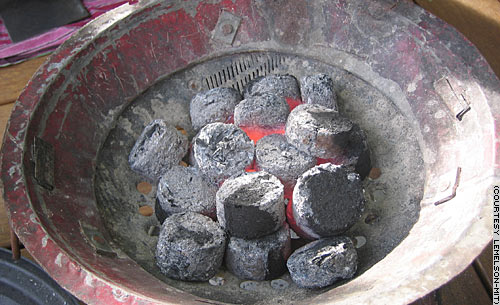Design of a Crushing and Agglomeration Process for Manufacturing Bagasse Charcoal
Victoria Y. Fan, Massachusetts Institute of Technology, D-Lab, (Amy Smith) June 2006
ABSTRACT
In Haiti, wood and wood charcoal are common fuels for cooking. This practice has contributed to deforestation, leading to erosion and fatal floods. The availability of charcoal made from a different source other than wood, such as agricultural waste, might provide Haitians with an alternative, more sustainable fuel, which in turn may reduce fuel prices. MIT students have developed various methods for producing charcoal out of simple inexpensive devices. In a current manufacturing process, carbonized bagasse is crushed to a powder, then mixed and agglomerated with yucca binder into balls. A novel method may reduce operator exposure and inhalation of charcoal fines by keeping primary manufacturing phases in the oil drum and reducing the operational steps of transferring the material from one location to another. The goal of this thesis was to understand, test, and optimize the parameters of this novel crushing and agglomeration process. The final prototype was found to effectively crushing charcoal and mix charcoal with binder to some extent, while being an inexpensive alternative to reduce overall charcoal exposure. However, the mixing and agglomeration was not sufficiently uniform and further designs should be considered to increase uniformity of mixing of binder and charcoal.

